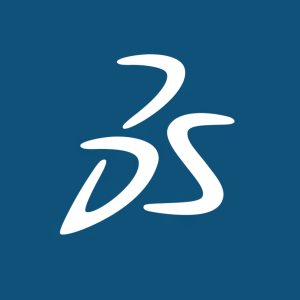3D Printing Global Market Report 2022: Growing Prototyping, Product Development, Innovation, and Time-To-Market Drives Sector
Rhea-AI Summary
The 3D printing market reached USD 12.65 billion in 2021, with a projected compound annual growth rate (CAGR) of 22.6% through 2030. Key growth drivers include demand in construction, medical implants, and digital dentistry, as well as advancements in Industry 4.0 technologies. Medical 3D printing enhances patient care through customized devices and improved surgical methods. The automotive sector is adopting 3D printing for lightweight parts, while desktop printers gain popularity for their efficiency in creating dental appliances. However, potential hazards include toxic emissions and high initial costs, which may limit market expansion. The software segment is expected to dominate revenue share as it streamlines 3D object production.
Positive
- 3D printing market size reached USD 12.65 billion in 2021.
- Projected CAGR of 22.6% through 2030.
- Increased demand in construction, medical, and dental sectors driving growth.
- Automotive sector embracing lightweight components through 3D printing.
- Medical technology advancements enhancing patient care.
Negative
- Potential health risks from toxic emissions and materials.
- High deployment costs may hinder market growth.
Insights
Analyzing...

The market size of 3D printing reached
The increasing demand for 3D printing in areas like construction, medical implants, and underwater printing, as well as the adoption of advanced technologies such as Industry 4.0, smart factories, robotics, Machine Learning (ML), and others, are significant factors driving the growth of the market.
The medical sector has seen a great impact from the development of medical 3D printing technology, which has created unprecedented tools and therapeutic techniques that offer new levels of comfort and customization in patient care. By using 3D imaging methods like MRI and X-Ray CT, patient-specific models for 3D printing are derived, offering a better understanding of anatomical and pathological features in a clinical context.
The models can be used as instruments for practicing implantation and surgical procedures, and medical device companies can use 3D printing to rapidly develop and test drug delivery devices such as inhalers and injectors. Furthermore, 3D printing enables the development of novel geometries such as trabecular lattices, which promote bone ingrowth on a specific implant.
3D printing, also known as additive manufacturing, is a process that builds 3-dimensional objects by adding materials layer by layer using a digital file called Computer-Aided Design (CAD). Different types of polymers, metals, and ceramics can be used for 3D printing, allowing for the creation of complex designs that would be difficult to fabricate through traditional processes.
The rise in demand for 3D printing in digital dentistry is another factor driving the growth of the market. Dental offices around the world are using desktop dental 3D printers for their excellent accuracy and speed in generating various items such as dentures, prosthetics, aligners, sleep guards, bleaching trays, and sports guards.
Dental 3D printing enables dentists to create personalized designs for various products, including dental implants and dental prosthetics, which are essential in restoring dental structure.
3D printers make dental appliances with less labor, less overall cost, and higher manufacturing quality than manual methods in dental labs. Dental laboratories are also combining oral scanning, 3D printing, and CAD/CAM design to produce crowns, bridges, stone models, and various orthodontic appliances, driving the growth of the market.
Market Dynamics
Rising demand for 3D printing in the automotive sector
The 3D printing market is experiencing a surge in demand from the automotive sector, particularly for the production of lightweight vehicle components. The use of desktop 3D printers allows engineering and design teams to utilize this technology in-house, with certain plastic materials like polypropylene being widely used for dashboard parts, airflow, and modified fluid systems. As a result, the demand for 3D printing in the automotive sector is driving market revenue growth, with fixtures, cradles, and prototypes being the most commonly printed items that require rigidity, strength, and durability.
The 3D printing market is also being driven by a range of key factors, including a reduction in errors, ease of development, reduced time and overall development costs, and the ability to build intricate customized designs. This has enabled consumers to develop products to their specific requirements, such as toys and shoes, driving further revenue growth in the market.
Moreover, professional 3D printers can print high-performance thermoplastics reinforced with Continuous Fibre Reinforcement (CFR), such as ULTEMTM 9085 Filament, which adds strength to the printed parts. This has expanded the potential aerospace applications for additive manufacturing, with larger parts being printed more quickly by professional 3D printers. All of these factors combined are driving revenue growth in the 3D printing market.
Potential hazards of 3D printing
The risks associated with 3D printing can vary depending on the type of printer and materials used. For example, printing materials that are in powder form can pose a risk of inhalation and skin irritation. Additionally, hazards associated with printers that use lasers can be different from those that use high temperatures to melt materials. Common risks in 3D printing include the emission of toxic chemicals and particles, which can hinder the growth of the market as they pose health risks to individuals who come into contact with them through skin exposure or inhalation. Furthermore, the high cost of deploying large-scale 3D printing is also a factor that hinders the growth of the market.
Key Takeaways
Component Outlook
The 3D printing market is categorized into hardware, software, and services based on components. Over the forecast period, the software segment is anticipated to have a substantial revenue share. The software for 3D printing makes it easier to produce 3D objects by converting models created in 3D modelling software into data that a 3D printer can understand. Slicer software, which divides a 3D model into pieces for the printer to construct the object slice by slice, is commonly used for 3D printing.
Makerspaces and creative studios that use 3D printers frequently rely on 3D printing software, which is driving market revenue growth. 3D software operates on the mathematical concept of geometry, with three separate components assigned to each developed element in 3D, X for breadth, Y for length, and Z for depth. This segment's market revenue growth is also driven by the variety of tasks that 3D software offers, such as layout, animation, rendering services, and modelling.
Printer Type Outlook
The 3D printing market is segmented into desktop 3D printers and industrial printers based on printer type. Over the forecast period, the desktop 3D printer segment is expected to experience significant revenue growth. Desktop 3D printers are compact, build items from scratch, and can be used on a standard desk.
Their compact size makes them ideal for small workstations, and they are portable. This segment's market revenue growth is also driven by the fact that
Technology Outlook
The 3D printing market is segmented into stereo lithography, Fuse Deposition Modelling (FDM), Selective Laser Sintering (SLS), Direct Metal Laser Sintering (DMLS), polyjet printing, inkjet printing, Electron Beam Melting (EBM), laser metal deposition, digital light processing, laminated object manufacturing, and others based on technology.
The Fuse Deposition Modelling (FDM) segment accounted for a significant revenue share in 2021. FDM 3D printing is an additive manufacturing (AM) technique that uses thermoplastic polymers in the form of filaments to manufacture parts layer by layer by selectively depositing melted material along a specified route.
Its ease of handling is one of the many advantages of FDM or FFF 3D printing, which is driving market revenue growth for this segment. Firms using FDM 3D printing can streamline the manufacturing process and test, modify, and eventually produce a finished product in a shorter amount of time than using conventional techniques.
Application Outlook
The 3D printing market is segmented into prototyping, tooling, and functional parts based on application. Over the forecast period, the prototyping segment is expected to experience significant revenue growth. 3D printing is used in rapid prototyping to create models for testing one or more parts of the product and to modify it immediately until the final design is achieved. Prototyping is a helpful procedure in many industries because it allows for iterations until the desired outcome is achieved, which is driving market revenue growth for this segment.
Material Outlook
The 3D printing market is segmented into polymer, metal, and ceramic based on material. Over the forecast period, the metal segment is expected to experience significant revenue growth. Metal 3D printers can create complex parts, from generatively built structures to unique cooling channels, that are strong and function well in demanding situations. The ability to print metal components allows organizations to be more flexible and responsive. By using a metal 3D printer
Key Topics Covered:
Chapter 1. Market Synopsis
Chapter 2. Executive Summary
Chapter 3. Indicative Metrics
Chapter 4. 3D Printing Market Segmentation & Impact Analysis
4.1. 3D Printing Market Segmentation Analysis
4.2. Industrial Outlook
4.2.1. Market indicators analysis
4.2.2. Market drivers' analysis
4.2.2.1. Growing prototyping, product development, innovation, and time-to-market
4.2.2.2. Increasing benefits of 3D printing
4.2.2.3. Rising government investments in 3D printing projects
4.2.2.4. Rising demand for 3D printing in construction medical implants and underwater printing
4.2.3. Market restraints analysis
4.2.3.1. Limited availability and high cost of material
4.2.3.2. Unavailability of standard process controls and misled industry participants
4.2.3.3. Potential hazards of 3D printing
4.3. Technological Insights
4.4. Regulatory Framework
4.5. ETOP Analysis
4.6. Porter's Five Forces Analysis
4.7. Competitive Metric Space Analysis
4.8. Price Trend Analysis
4.9. Customer Mapping
4.10. COVID-19 Impact Analysis
4.11. Global Recession Influence
Chapter 5. 3D Printing Market By Component Insights & Trends
5.1. Component Dynamics & Market Share, 2022 & 2030
5.2. Hardware
5.3. Software
5.3.1. Market estimates and forecast, 2019 - 2030 (USD Billion)
5.3.2. Market estimates and forecast,
5.3.3.
5.3.4.
5.3.5.
5.3.6. Scanning Software
5.4. Services
Chapter 6. 3D Printing Market By Printer Type Insights & Trends
6.1. Printer Type Dynamics & Market Share, 2022 & 2030
6.2. Desktop 3D Printer
6.3. Industrial Printer
Chapter 7. 3D Printing Market By Technology Insights & Trends
7.1. Technology Dynamics & Market Share, 2022 & 2030
7.2. Stereo lithography
7.3. Fuse Deposition Modelling (FDM)
7.4. Selective Laser Sintering (SLS)
7.5. Direct Metal Laser Sintering (DMLS)
7.6. Polyjet Printing
7.7. Inkjet Printing
7.8. Electron Beam Melting (EBM)
7.9. Laser Metal Deposition
7.10. Digital Light Processing
7.11. Laminated Object Manufacturing
7.12. Others
Chapter 8. 3D Printing Market By Application Insights & Trends
8.1. Application Dynamics & Market Share, 2022 & 2030
8.2. Prototyping
8.3. Tooling
8.4. Functional Parts
Chapter 9. 3D Printing Market By Material Insights & Trends
9.1. Material Dynamics & Market Share, 2022 & 2030
9.2. Polymer
9.3. Metal
9.4. Ceramic
Chapter 10. 3D Printing Market Regional Outlook
Chapter 11. Competitive Landscape
Chapter 12. Company Profiles
Companies Mentioned
Markforged Inc. - 3DCeram.
- Autodesk Inc.
- Canon Inc.
Dassault Systemes Envisiontec US LLC .Zygo Corporation ExOne - GENERAL ELECTRIC
- Materialise.
For more information about this report visit https://www.researchandmarkets.com/r/mz0vjf
About ResearchAndMarkets.com
ResearchAndMarkets.com is the world's leading source for international market research reports and market data. We provide you with the latest data on international and regional markets, key industries, the top companies, new products and the latest trends.
Media Contact:
press@researchandmarkets.com
For E.S.T Office Hours Call +1-917-300-0470
For
For GMT Office Hours Call +353-1-416-8900
Fax (outside
Logo: https://mma.prnewswire.com/media/539438/Research_and_Markets_Logo.jpg
![]() View original content:https://www.prnewswire.com/news-releases/3d-printing-global-market-report-2022-growing-prototyping-product-development-innovation-and-time-to-market-drives-sector-301796821.html
View original content:https://www.prnewswire.com/news-releases/3d-printing-global-market-report-2022-growing-prototyping-product-development-innovation-and-time-to-market-drives-sector-301796821.html
SOURCE








